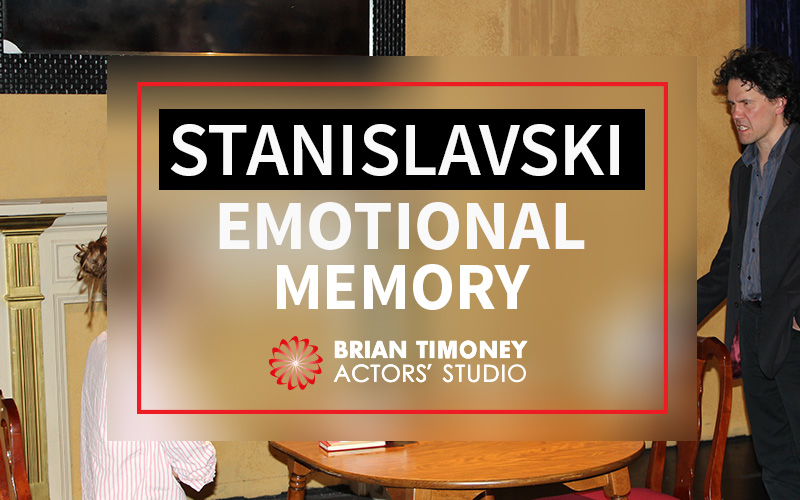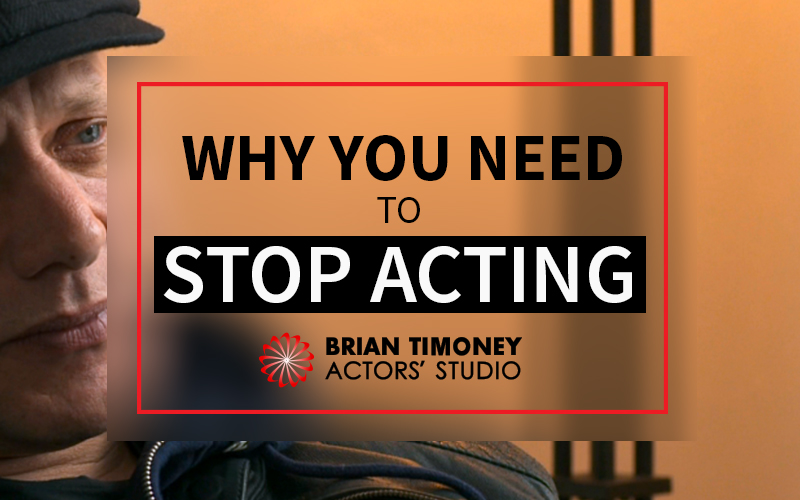“The person you are is a hundred times more interesting than the best actor you could ever become…” – Konstantin Stanislavski
A name recognised even by non-actors, Konstantin Stanislavski and his ‘System’ of method acting is responsible for the success of theatrical heavy-hitters such as Philip Seymour-Hoffman and Daniel Day-Lewis.
However, you don’t need a double barrelled surname to master the dramatic techniques of the system – you only need to have a basic understanding of human emotion. In this way, at least acting jobs are safe from robots.
Method acting asks not that you “act,” but rather that you:
“put life into the imagined circumstances and actions until you have completely satisfied your sense of truth.”
It’s been argued that since the inception of acting, many centuries or even millennia ago, we have recognised that a piece is most effective when the actor truly feels the emotion they’re trying to convey. Aristotle himself swore that:
“the secret to moving the passions in others is to be moved oneself”.
One way of doing this is through emotional memory.
Emotional Memory
Also called Affective Memory, this technique asks us to forget about “acting” out emotions. Feeling emotion is such a visceral part of the human experience that it is at the same time universal and difficult to fake. Because it’s universal, though, you don’t have to fake it – just remember it.
A form of Emotional Memory we have probably all practiced is “crocodile tears”. Think back to when you were a child, trying to make yourself cry to get more pudding, to go home, or to get your sibling in trouble. You probably made these “crocodile tears” by thinking of something sad, like the death of a beloved pet. This is the Stanislavsky system in action.
To summarise: Emotional or Affective Memory asks the actor to call on a memory similar in detail or sensation to their character’s situation. Through empathy, the actor lives the character rather than simply reciting it.
Empathetic Emotional Memory
The aim of Emotional Memory is to feel the emotion your character is going through, but you might not even need a real memory – just an exceptional sense of empathy. Something you saw or read about might evoke your character’s emotion better than the script.
For example; if your character is feeling outraged because someone got a promotion over them, you might not relate. However, you might feel similarly outraged when you remember that since being fired from Top Gear, Jeremy Clarkson has become the highest-paid TV host in Britain.
Although this situation does not directly affect you, it can still cause a deep sense of indignation. This is enough. So long as you feel the emotion of your character – no matter how you get to it – you are enacting the Stanislavsky system.
Sense Memory
Sense Memory, popularised by Lee Strasberg, is a variant of Emotional Memory. This take on the Stanislavski system asks that the actor take time out to recall every detail of their memory. They must remember not just the emotion, but what they heard, tasted, touched, smelled, and saw whilst feeling it.
The effectiveness of recollecting physical sensations in Emotional Memory is still highly debated, but modern Stanislavski academics such as Strasberg suggest it can help actors completely relax into the memory.
Exercises
Sense Memory
Practicing Sense Memory can help ease you into practicing Emotional Memory. To begin with, try to remember an instance of each sense:
See –
Your mother’s face, in as much detail as possible.
The outfit you wore to your first school formal.
A starry sky.
Hear –
Rain against the roof.
Waves on the shore.
Your alarm clock.
Smell –
Smoke from a bonfire.
Freshly baked bread.
Wet dog.
Taste –
Chocolate.
Buttery toast.
Vinegar.
Feel –
A hot mug of tea in your hands.
A cold shower.
A blush spreading across your cheeks.
Emotional Memory
Now that you’ve exercised your Sense Memory, it’s time to practice recalling emotions. Use the senses to ease yourself into Emotional Memory.
We’re going to use the emotion of joy. Try to remember a moment in your life you felt joyful. For example: when you were accepted into university, when your partner first said “I love you,” or maybe just a really good breakfast.
Write it down in detail, using each of the five senses.
Now that you’re experiencing Emotional Memory, practice acting out a short monologue or scene that requires joy. Here’s one from The Perks of Being a Wallflower.
Be Careful
Toward the end of his time, Stanislavski began to doubt the safety of Emotional Memory. The method was exhausting and could have negative side-effects if the actor drew on bad memories without a therapist or counsellor.
There is a danger that you might “go to a dark place,” like Heath Ledger is infamously rumoured to have done. The method asks you not to force a memory, or use one that could hurt you. Stanislavski asks that you don’t “assault the subconscious”. Past memories are preferable to present situations as they’re more controllable .
With that warning in mind – best of luck. Remember the good times and re-live them.
“With any part you play, there is a certain amount of yourself in it. There has to be, otherwise it’s just not acting. It’s lying.”
–Johnny Depp
Many people see acting as one great big game of make-believe, with actors spending their lives playing at being other people. While in once sense this is true, creating truly exceptional performances is about moving beyond the idea of playing a character to truly become your character. This is what we mean when we say that you need to stop acting and “get real”.
Method acting allows you to dramatically (no pun intended!) improve your performance skills so you can truly become your characters, both in your own mind and the minds of your audience. When you learn how to method act, you gain a whole new range of skills to help turn you into the consummate performer you need to be for a successful career as a professional actor.
Understand how your brain works
Our brains work in different ways when carrying out different tasks. The logical, analytical parts of our brain work best with written and verbal information while the emotional, creative side of our brain responds more to images and our senses. When becoming a character, we need to use that emotional, creative side to inform our performance.
We do this by tapping into our memories, recalling images and sense memories to help trigger the emotions we need to build our performances. By understanding how our brains work, we can give ourselves a palette of real emotions to work with on command. Method acting allows us to do just that, giving us the techniques to effectively tap into our brains hidden potential.
Produce real emotions on demand
Method acting training involves learning to control this process of emotional recall to inject real truth into a performance. The process of doing this is known as affective memory and works by taking experiences from our own lives and deliberately recreating the emotions associated with those experiences.
Learning to control this process requires a great deal of self-discipline, but, once mastered, affective memory allows you to create performances that will be utterly convincing as they are anchored in truth. Audiences can always tell when an actor is faking it, so learning to create genuine emotions reliably and on demand is a key skill for any professional actor.
Create believable characters
The ultimate goal of method acting is to create characters who are totally believable to an audience. Injecting real emotions into your performance is a key part of this process, but there are also a number of other ways The Method can help you learn to create convincing characters on stage, on film or in any other kind of performance.
Method acting helps you to understand your own personality, providing a model for creating characters, but also helping you unlock your own psyche as a mine for “psychological truth”. Developing a coherent and truthful psychological blueprint for your characters will make them far more real to you, and therefore, much more believable to your audience.
Establish convincing relationships
One of the key things that defines any character is the way they interact with other characters. Convincing relationships between characters can help sell a performance and ensure that your audience are fully invested in the narrative of the story you are bringing to life. Learning method acting includes learning how to develop believable relationships with your fellow actors, which often involves as much work off-stage or off-screen as on.
For his Oscar-winning performance as the Joker in The Dark Knight, Heath Ledger reportedly refused to break character during the entire shoot. He also sent his co-stars various bizarre and offensive things in order to keep people appropriately unsettled around him. The idea was to provoke honest reactions from his co-stars that would imbue his scenes with them with emotional truth, helping to sell those relationships to the audience.
Bring your characters to life
Acting isn’t just about learning lines and repeating them on cue, it’s also important to master the physical aspects of bringing a character to life. One of the key method acting techniques for enhancing your physical performance is animal exercises. These focus on imitating animals, incorporating elements of the way they move into your characters. This produces characters that are both physically and psychologically distinctive from yourself as the very way they move is unique.
Oscar-winning actor Mark Rylance, speaking to Backstage, said of director Michael Alfreds:
“We did a lot of animal work and improvisation. He taught that the most perfect performances were alive and present and different each night.”
Animal exercises allow you to create performances that are alive in exactly the way Rylance mentions, but also fluid. This means you can give a performance that feels the same, time after time, without having to try to recreate the exact same movements in a way that can quickly become stale.
Isn’t it time you stopped acting and got real? Our industry-leading method acting classes will help you take your life experiences and use them to kick-start your professional acting career. Whether you’re an absolute beginner or an existing actor desperate to take your skills to the next level, we can help. To find out more, just get in touch and we will be happy to answer your questions.
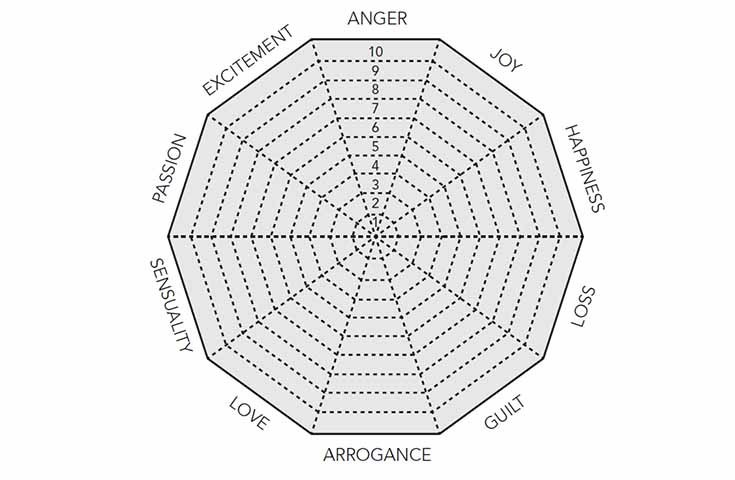
“Acting is the most personal of our crafts. The makeup of a human being – his physical, mental and emotional habits – influence his acting to a much greater extent than commonly recognized”
Lee Strasberg
Emotions make up the core components of the method actors instrument.
If you cannot access or identify with your emotions, no tools or level of technique will make you a great method actor. In fact, a great actor must be able to tap into emotions above and beyond their experience level. They must be able to express themselves and their character in a way that will often take them far out of their comfort zone.
In the actor’s attempt to show the human condition, warts and all, he or she must be able to get to grips with the complete wheel of human emotion.
The Wheel Of Emotion
“An actor needs to be able to experience and express at a level that most people cannot do or would not be comfortable with”
The Ultimate Guide To Method Acting
As a method actor trying to tap into the emotions of your character, there will be some emotions that you can access easily, while others will less familiar to you. It all depends on your past, your conditioning and your individual habits.
Tuning the key components of your method-acting instrument is about becoming more in-balance with the cross section of emotions, or a perfectly round Wheel of Emotion.
For each emotion on the diagram above, rate yourself out of ten. If you find an emotion easy to express, rate it a ten and draw a line at the appropriate level. At the opposite end, if you think an emotion is totally without the realms of your expression, give it a one.
Do this for each emotion, drawing a line at the correct level for each one. How rounded is your wheel of emotion? If it was the wheel of a car, would the car run smoothly, or would it be a bumpy ride?
Don’t worry if it is all over the place. That is to be expected early on in the process. Part of becoming an accomplished method actor is gradually smoothing out your wheel of emotion over time through practice.
How Can I Practice Emotions?
“Acting can literally save your life”
The Ultimate Guide To Method Acting
In modern society, we are very good at bottling up our emotions, often to the detriment of our health. A study by Harvard University, in fact, found that premature death from all causes increases by 35% among those who fail to express their emotions.
Using the Wheel of Emotion, actors can identify the emotions that they keep locked up, and work on letting them out. It can be a long, uncomfortable and challenging process, but you will emerge more accomplished as an actor, and a more rounded human being, by the end.
“Nothing gives me more pleasure than seeing students go from emotion suppressers to emotion expressers”
The Ultimate Guide To Method Acting
If you would like to know more about the Wheel of Emotion, why not pick up a copy of my new book. If you are looking for more formal training in method acting techniques, we have a range of classes. I’m sure we can find the right one for you!
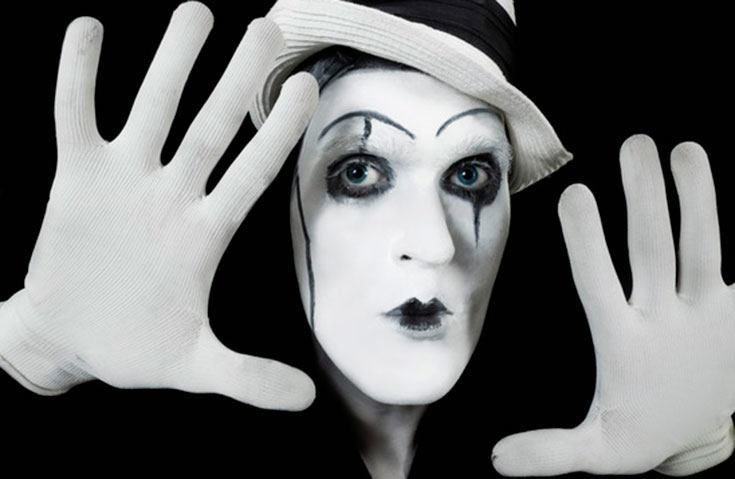
“Actors should…wear a costume, adjust the volume of their voice, achieve physical transformation into the character they portray, allocate their muscular energy efficiently, and model themselves into anything in gesture, voice or musical speech.”
Movement and, unlike our mime artist friend, voice, are important parts of an actor’s training. The body and voice are two parts of the instrument that can be harnessed effectively using tried and tested method acting techniques.
“How you move your body as an actor is one of the most important aspects of the whole job. I’ve devoted a lot of time and energy over the years to exploring all of the tools available to me, whether it’s my voice or body.”
Actor Karl Urban
Body
Does your body express your dramatic intention?
“When you free the body and it starts to work in conjunction with the mind, your whole instrument becomes extremely powerful.”
The Ultimate Guide to Method Acting
We, as actors, place far too much emphasis on what is being said, and not what the body is doing in a scene. I firmly believe that effective control and expression of the body is fundamental to outstanding acting.
“The body can tell a story without any dialogue at all.”
The mind and the body are inextricably linked, and many believe that it is the mind that leads the body. Everything that has ever happened to you, your history, all of your experiences, emotions and traumas are stored in the bones, muscles and cells of your body. This affects the way you walk, move, your posture and your gestures.
To authentically play a character, therefore, you must change your physicality by identifying your physical habits and neutralising them. In my studio, I ask my students to observe each other as they walk across a room, and comment on their physical traits.
“Tension closes the instrument down”
The Ultimate Guide to Method Acting
To find character, and accurately portray them, you must find their history. Getting in tune with the body, and freeing your instrument allows you to find that history, and authentically portray it.
Voice
“An actor’s voice should be a versatile and imaginative instrument capable of underpinning any performance”
Ellen Newman
Do you realise that you probably only use 10% of your vocal range and quality on a daily basis? To progress as an actor, you need to learn to expand your voice beyond day-to-day use.
Many aspiring actors aren’t interested in stagecraft. Most are focused entirely on the screen – big or small. But most, if not all outstanding screen actors of the day started on stage, and that is where they learnt to harness their voice. Your acting will ultimately suffer if you bypass an apprenticeship on the stage.
Having said that, voice work is not just about projection. It is about learning to express yourself through your voice.
“Can you say the word ‘love’ and fill it with the sound of love? Can you say the word ‘angry’ and fill it with rage?”
The Ultimate Guide to Method Acting
Once again, you must learn to ‘free’ your voice. Think of it like an instrument, with a variety of sounds and notes, and try to make music!
Want to know more about using your body and voice in your acting? Why not pick up one of my teaching materials?
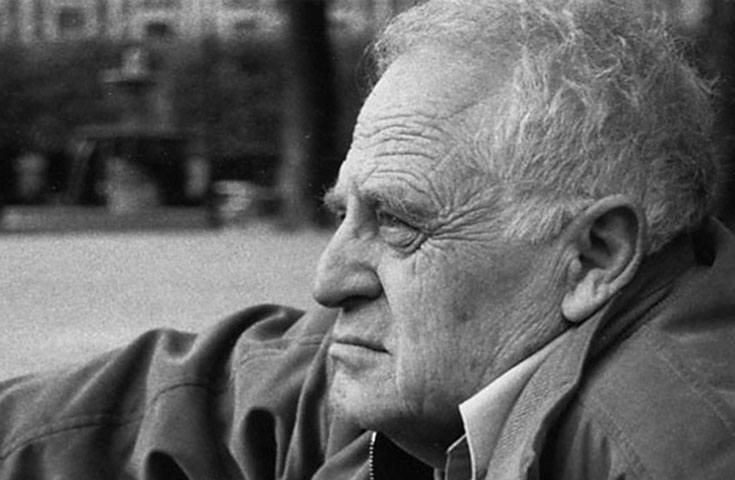
As if the BFI “Birth of the Method” screenings throughout October and November weren’t enough of a treat for anyone interested in method acting, they have more in store for us at the end of the month! On 27th November, gifted veteran director of the method generation, Jack Garfein, will be in person and in conversation at the BFI Southbank.
Reflecting on a life in a concentration camp, training as an actor at Lee Strasberg’s Actor’s Studio and working with Hollywood legends like Marilyn Monroe and James Dean, Czech-born Garfein will talk in detail to film archivist, author, historian and programmer Clyde Jeavons about the Method and the legendary talent it created.
Who is Jack Garfein?
“Holocaust films? Pah! They’re awful. They always show the horror, not the human element.”
Such is Jack Garfein’s commitment to exploring the emotions and motivations of character in his work as a director of the method.
Jack Garfein was born in the Carpathian Mountains of Slovakia in 1931. At 13, he was sent with his family to Auschwitz. As the only survivor of his family, he travelled to New York shortly after the war and began his life in drama. Despite knowing no English, and with fees paid for by the United Jewish Appeal, he studied at Lee Strasberg’s Actor’s Studio, the breeding ground for the “Italian street actors” Brando, Newman and Pacino.
In 1951, he joined Elia Kazan’s recently-formed Actors Studio as a director, and made his Broadway debut in 1953 with End as a Man. He made two acclaimed films soon after – The Strange One and Something Wild – and launched the careers of actors such as Ben Gazzara and Carroll Baker (whom he later married).
Garfein was no stranger to the stars of the Method. He was on first name terms with Hollywood legends Marilyn Monroe and James Dean, and produced two Arthur Miller plays.
“I had a wonderful relationship with him [Arthur Miller]. We spent a lot of time talking about divorces”
Showing no signs of abandoning the craft to which he dedicated his fortunate life, Garfein still teaches acting in New York and Paris at the ripe old age of 84.
How Do I Attend?
Jack Garfein joins the BFI in person on Thursday 27th November at the BFI Southbank at 6.20pm. Tickets can be purchased online here.
Get in quick, we think this will be a very popular one! Go along and hear tales of life in a concentration camp, a voyage to a new life, and training and working with some of Hollywood’s greatest actors, producers and directors, as well as insights and advice on method acting, and what it take to make it in this industry.
Would you like to follow in Jack Garfein’s footsteps and train in the Method? We are the UK’s leading method acting school, and offer a range of courses to suit all needs, budgets and time commitments.
Please get in touch!
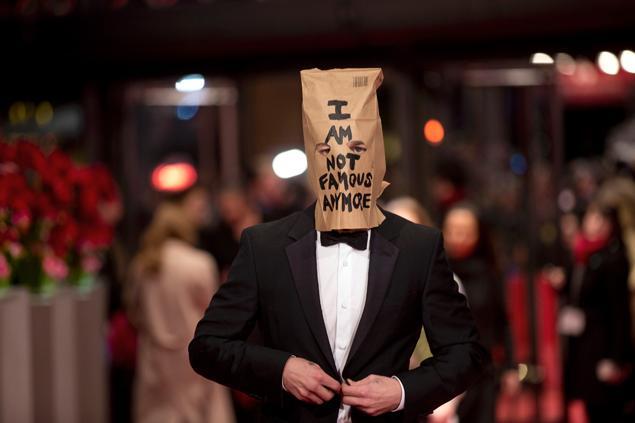
Shia LeBeouf
In a recent article in The New Yorker, Richard Brody asked whether method acting is destroying actors, citing the late Phillip Seymour Hoffman, Joaquin Phoenix and Shia LeBeouf (pictured) as examples.
Brody argued that the act of linking experiences and emotions from our own lives with those of a character, and playing a character by imagining a filled-out life and becoming the part “asks too much of performers”.
We wanted to address this issue with our readers and students, and ask; is the depth and authenticity of Strasberg’s school of method acting too much for actors?
The Method in Extremes
The Method has produced some of the greatest performances on stage and screen living memory. The act of delving into our deepest emotions of a character, to live and breathe their backstory and persona, and feel what they feel has produced authentic, powerful and hard-hitting performances.
80% of Best Actor Oscars have been awarded to method actors.
Method acting has become defined, therefore, by the high profile, well-publicised interpretations of some Hollywood actors.
We are familiar with how Adrien Brody prepared for The Pianist by practicing piano for four hours a day, how Robert De Niro and Joe Pesci lived and trained together for three months in the lead up to Raging Bull or Daniel Day Lewis’s unique approach to role preparation.
In the premature deaths of celebrated method actors like Phillip Seymour Hoffman and Heath Ledger, and the bizarre or unusual behaviour in public and private of the likes of Shia LeBeouf and Joaquin Phoenix, critics have found reason to criticise the Method. They have said that excavating painful memories or experiences from their past to fill out a character is damaging to actors, and had a part to play in their downfalls.
“Heath refused to talk to anyone out of character. If you tried to communicate with him normally instead of The Joker, he would just ignore you”
Christopher Nolan on Heath Ledger in The Dark Knight
Becoming The Part
“Brando’s performances revolutionized American acting precisely because he didn’t seem to be “performing”, in the sense that he wasn’t putting something on, as much as being”
The Method is a set of tools, which accomplished actors must learn to master. It allows you to, for a brief time, become the character. As long as you can compartmentalise, and affectively harness the tools of the Method, there is clear value in disappearing into a role. There is a danger, though, in taking it to extremes.
If you would like to know more about Method acting, why not read my book? It is the first step-by-step guide to method acting.

“An actor’s job is to “feel on cue.””
Every great actor uses their own lives to the full, and constantly exercises their emotional muscles.
One of the most daunting and challenging parts of being an actor is portraying extreme emotions on cue. In auditions, on stage and on screen we are called upon to cry for imaginary relatives, grieve the breakdown of imaginary relationships or get angry at imaginary betrayals.
Most of us use emotional recall from our own lives to achieve as close as possible to how our character might behave. We recollect in our minds heartbreaks, losses or betrayals in our own past lives, and try to conjure the emotions in our performances.
Using memories in this way does not always produce authentic performances, though. It is very difficult to recreate a memory. Effective and believable emotional recall in performance is only achieved through one of the core elements of the Method, Sense Memory.
What is Sense Memory?
“Everything we perceive, interpret, and ultimately feel in life is filtered through our five senses”
Everything we experience in our day to day lives – sounds, smells, feelings, sensations, tastes – is stored in our subconscious using sense memory. These dormant sensual memories, when exercised effectively by the Method actor, can act as triggers to effectively recall emotions.
Sense memory can help to release certain emotions that are locked away. It is the act of revisiting a single image or sense memory to unlock the emotions that surrounded it.
For example – imagine your character is holding vigil at the bedside of a dying relative. You might want to use your own experiences of hospitals, death and grief to inform your performance. Rather than trying to conjure directly the emotional journey that you went on, try to focus on a single sense memory – a ticking clock in the hospital for example, or the sound of the life support machine.
Or maybe your character is engaged in a bitter argument with their partner over a betrayal. Have you ever has a similar argument? What do you remember of the scene? A television in the background? The smell of a meal cooking? A particular song?
Training
Sense memory is at the core of acting. If you can master it, you will be able to create much more authentic, wide and powerful performances. Practice conjuring emotions through sense memory, you will be surprised by the results!
It is important to relax mentally and physically before starting any sense memory exercise. You must clear the space necessary for a response to a sense memory before you begin with the exercise.
Start with a simple sense memory, and with each exercise build on the complexity until you have a spectrum of emotions in the bank. Soon, it will become second nature to use sense memory in your acting.
Sense memory, when mastered, is one of the most powerful tools in the method actor’s arsenal.
If you would like to know more about sense memory, or the various techniques involved in method acting, why not read my book?

“Act with your scars”
Shelley Winters
“Affective memory” technique is probably one of the most well known method acting exercises. It is widely used by Hollywood actors, whose extreme interpretations have been well documented. For some critics, it is genius, for others, dangerous.
‘Affective memory’ is the act of delving into your own past experiences to add truth and humanity to the pain, suffering and fear of a character. It is an extremely effective technique in which actors find a parallel in their own lives with the character arc of the role they are playing.
How Does It Work?
Once you are relaxed, sit in a chair and begin to relive the past experience that you believe will help with your character. Try to remember as many details as possible about the event – Where did it take place? What were you wearing?
Dig deeper, and try to remember the sensory elements of the experience – what did the place look like? What was the weather like? What did the clothes feel like? How did they smell?
It is important that you recreate the sights, sounds, tastes and smells of the event in as much detail as possible.
At this stage, we are not trying to recreate the emotions that you felt at the time. The hope is that by remembering every sensory element about the experience, the same emotions that you felt then will be naturally triggered.
Sometimes the emotions can be quite unexpected. Often they can be disturbing and traumatic.
Be Careful
“I felt very much at home with the sadder side of Tommy, but it’s not a territory I need to dwell in”
Some of the experiences we need to draw on using the “affective memory” technique can be painful. They are also very powerful. This means it’s important to understand how to use the technique in detail. It’s not for dabblers, you need to master the technique to be able to us use it in a safe and effective manner.
Given the powerful effect of reliving traumatic experiences from your past, we recommend exploring ‘affective memory’ for the first time in the secure environment of a method acting class.
If you would like to explore the “affective memory” technique, or any other aspects of method acting, why not take one of our courses?
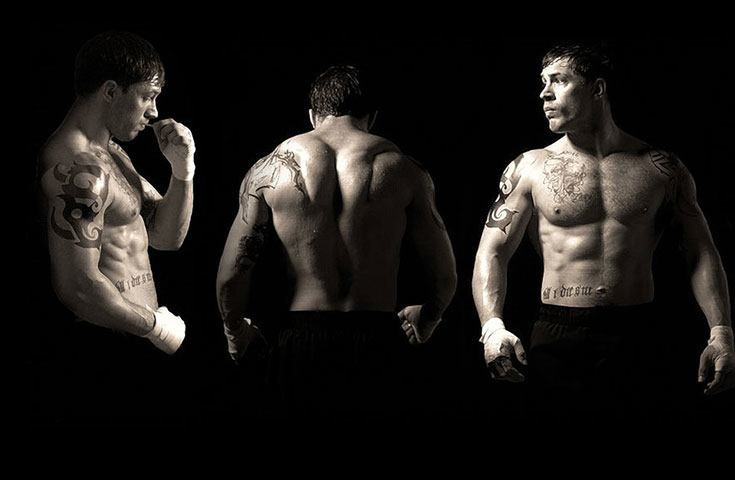
“The secret to moving passions in others is to be moved oneself”
Aristotle
We were reading recently about how Tom Hardy brought his real life experiences into his role as a troubled ex-marine-turned-cage fighter Tommy in the critically acclaimed film ‘Warrior. ’
“The action drama is a paean to redemption and the power of the human spirit, themes that resonate strongly with Hardy.”
At the time that he made ‘Warrior’, American critics were comparing Tom Hardy to a young Marlon Brando, one of the greatest ever method actors. The star of Bronson, Lawless, The Dark Knight Rises, Tinker, Tailor, Soldier, Spy, Inception and the forthcoming Mad Max remake has more life experience than most Hollywood actors to draw on when it comes to playing a character like Tommy.
With a history of drug and alcohol abuse, stealing, gun possession and jail time, he had a deep chest of experiences to channel into tortured ex-marine Tommy.
“I don’t need to discuss or work around the abuse that surrounds alcoholism and dysfunction in families who suffer from that disease because it’s something I can draw on from personal experience.”
Reading about how Tom Hardy connected with the sadder side of Tommy prompted us to think about how the power of bringing real life into character as actors.
Life comes first. What I see in the characters, I first try to see in life
Daniel Day Lewis, Method Actor
The Method is a technique allowing you to inspire yourself at will, in part, by reliving your own life experiences and channeling them through the character. It is the creative (re)experiencing of memory and experience on stage or screen.
“Experience makes the doors open”
Marion Cotillard, Backstage
This is the essence of Konstantin Stanislavsky’s ‘system’ which, we think, lends a greater and deeper truth and humanity to the character. In ‘Warrior’, the spellbinding action in the cage is only half of the story. The emotional and psychological turmoil in its central characters is the other.
Tom Hardy was absolutely believable and compelling as Tommy. He used the ‘affective memory’ method acting technique to create a character that was human and very much alive, not to mention the muscle bulk he put on for the role! Hardy’s ability to draw on poignant personal experiences and channel them is what makes him one of the leading method actors working in Hollywood today.
“The fight is within me, and I’ve been to all kinds of different rooms in my life”
Would you like to learn more about ‘the method’ and how it can help your acting career? Why not take a look at our range of acting courses? Alternatively, why not read my book?
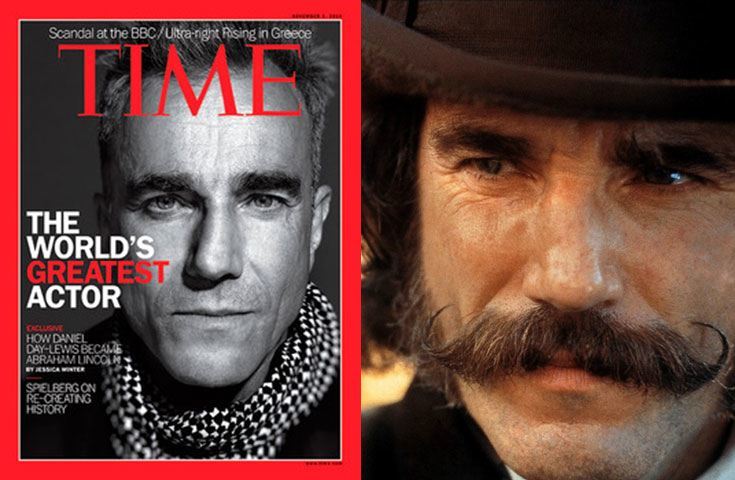
“films don’t begin only when the camera starts rolling”
Most headlines you read about Daniel Day-Lewis, will talk about the “madness” of his method. Is it “madness” or a unique and brilliant brand of method acting that has brought his widespread and universal acclaim?
Despite only having made a dozen films in his career, he remains the only actor ever to win 3 Best Actor Academy Awards. There may be madness in his method, but it sure is working for him!
Daniel Day Lewis’s Unique Method
Day Lewis famously spent the entire shoot of Oscar-winning My Left Foot (1989) in a wheelchair to get into character as cerebral palsy-sufferer Christy Brown. For Last Of The Mohicans (1992), he lived in the woods and learned how to track, kill and skin wild animals. To prepare for In the Name Of The Father (1993), in which he played Gerry Conlon of the Guildford Four, he had himself incarcerated over night and mistreated by the guards. For The Unbearable Likeness Of Being (1988)he took it upon himself to learn Czech, despite the script being in English.
The stories of Daniel Day Lewis’ unique method are well known and very well documented. The man only makes a film every couple of years, and so the story of his preparation for a role is often as talked about as the role itself!
He shuns the spotlight, and is visibly uncomfortable discussing his roles. His reclusiveness creates a level of mystique and intrigue around his process.
“You move very quickly from self-consciousness to a place where you are no longer aware of the decisions you are making, of the life that is taking shape. And that’s how it has to be, because self-consciousness is death in front of the camera.”
While Day Lewis’s method acting has earned him multiple gongs, his real achievement is creating characters that are completely believable and authentic. Daniel Day Lewis doesn’t play the character. He is the character.
“He believes so fervently that he is the character he is playing that audiences are swept along with him.”
In Lincoln (2012)for example, Day-Lewis created a voice and persona for a real historical figure. Given that Abraham Lincoln died in 1865, there are no audio or video recordings of the Civil War-era President. Day-Lewis employed the best of his method techniques to get inside the head of a character he knew little about, to create the voice and character was saw on the screen.
The result won him his third Best Actor Oscar.
While the method that we teach is less about extreme measures, and more effective techniques to channel the character you are playing, Daniel Day Lewis is certainly a fine example of the proven success of the method.
Would you like to train in method acting? Get in touch today to find out more about our courses.


